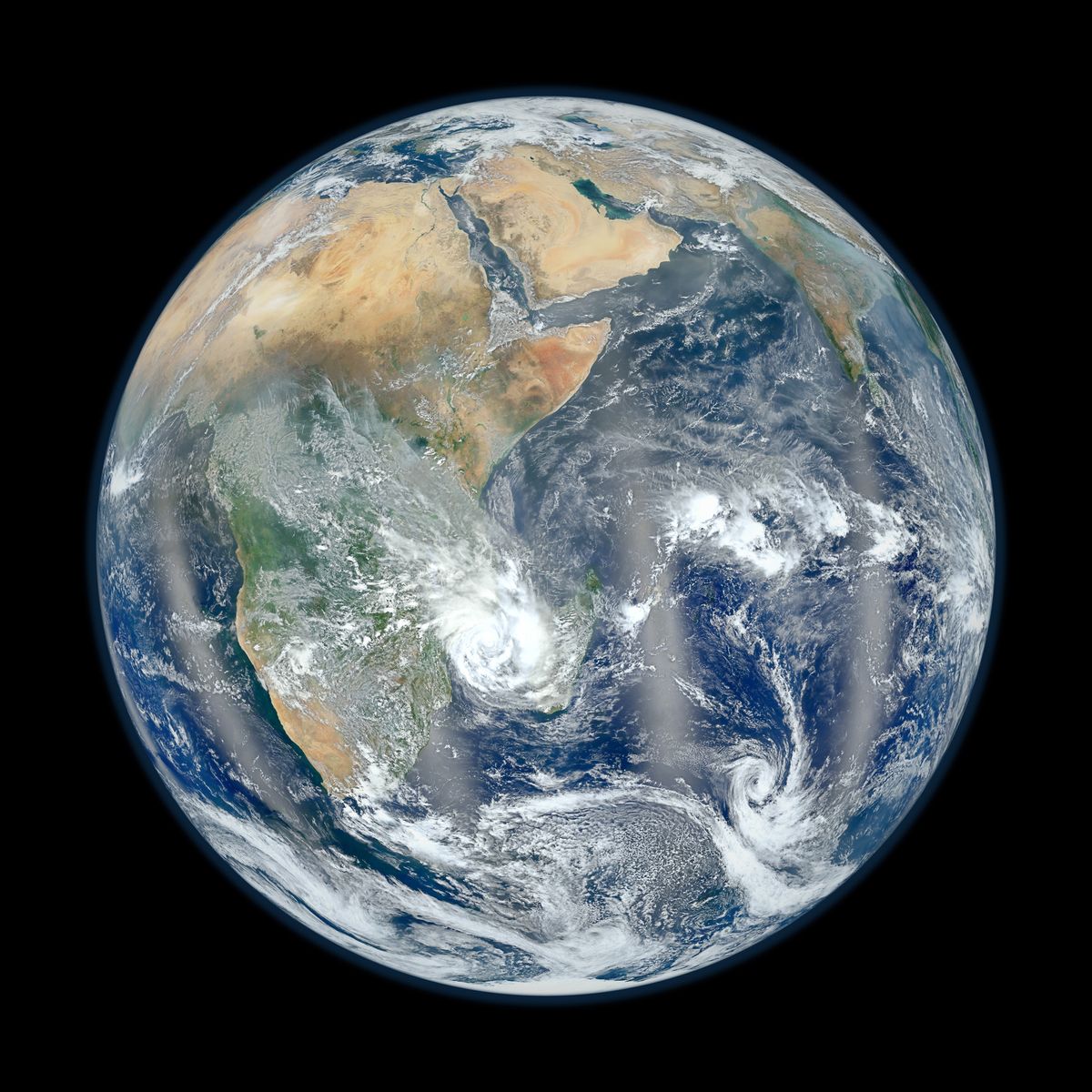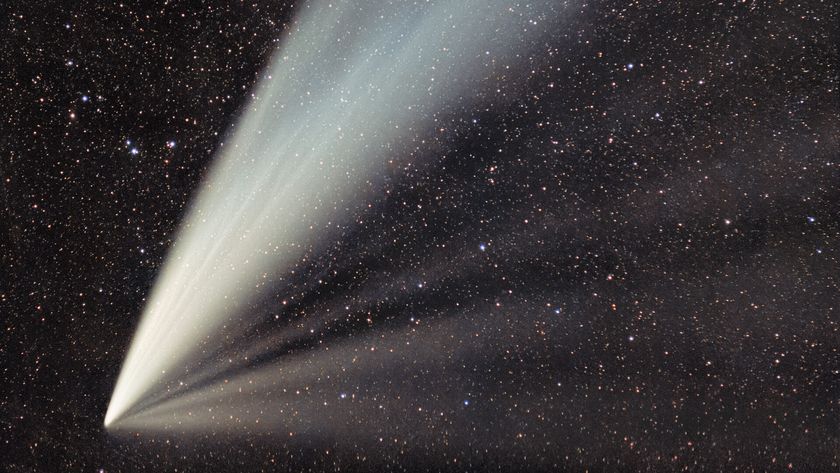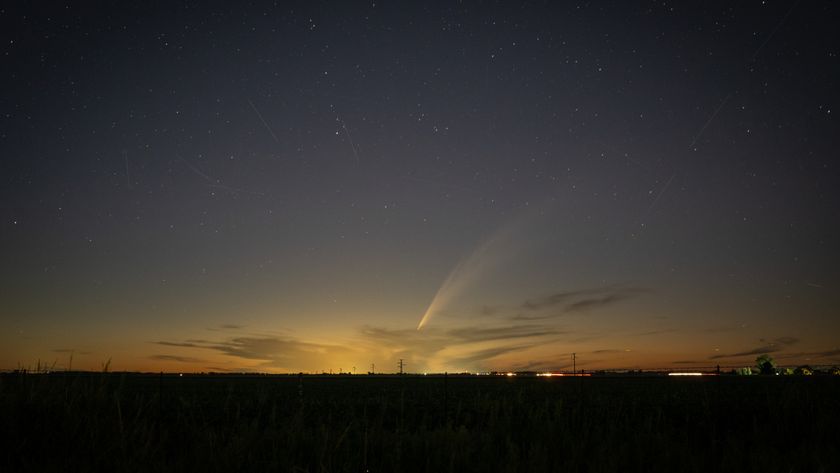
Earth is bathed in water, but will there be enough for everyone in the future?
The question doesn't have an easy answer.
Humans are drawing down the resource too quickly for it to be replenished, which could lead to conflict and natural catastrophes, experts said April 27 at the 15th Isaac Asimov Memorial Debate, held at the American Museum of Natural History in New York City.
However, pragmatic solutions — such as conserving water and raising its costs — could help. What's more, scientists have a few crazy tricks up their sleeves to deal with the coming water crisis, from bagging water-rich comets to building water-filtration plants on Mars, researchers said.
Scarce resource
Scientists now think Earth first received its cache of water a few billion years ago, when the solar system was still forming. At that time, the snowball planets Uranus and Neptune switched places, sending a whole bunch of icy debris in their orbits careening straight toward Earth, said Heidi Hammel, executive vice president of the Association of Universities for Research in Astronomy.
Now, water covers about 70 percent of Earth's surface. However, only 2.5 percent of that is freshwater, and just a small fraction of that is drinkable, said Kathryn Sullivan, undersecretary of commerce for oceans and atmosphere and administrator of the National Oceanic and Atmospheric Administration. [5 Ways We Waste Water]
Sign up for the Live Science daily newsletter now
Get the world’s most fascinating discoveries delivered straight to your inbox.
Humans are drawing much of that drinkable water out of the ground at an unprecedented rate. For instance, the groundwater in the aquifer under the Gaza Strip will be completely used up in two years, said Charles Wald, a retired U.S. Air Force general.
When people run out of water, things get ugly, Wald said at the Asimov debate, adding that the conflict in Darfur, Sudan, was largely between pastoralists and nomads over water rights.
And water battling isn't just a foreign affair.
For instance, "35 states in [the United States] are fighting with each other over water today," Sullivan said.
Changing landscape
The dwindling levels of groundwater won't just mean people must find other sources of water to drink; it may even be changing the landscape in surprising ways.
For instance, in California's Imperial Valley, the huge depletion of groundwater has caused the ground to sink about 100 feet (30 meters) over the last century, Sullivan said.
And drought in California could lead to more earthquakes because people are drawing up water from the ground so quickly that they are making the Earth's crust lighter. The lighter, more buoyant crust — which floats on the Earth's flowing inner layer, called the mantle — rises as a result, said Tess Russo, a hydrologist at Pennsylvania State University.
That rising crust, in turn, releases some of the pressure on the San Andreas Fault, which allows the two plates to move relative to each other and trigger small earthquakes, Russo said.
Meanwhile, groundwater pumping raises the mighty Sierra Nevada mountains by a few millimeters every year, according to a 2014 study published in the journal Nature.
Out-of-this-world solutions?
To solve these problems, scientists have proposed all of the usual solutions: more targeted irrigation, water recycling, desalination plants and smarter crop use. In the short term, water needs to cost more than it does now, at just pennies per gallon, all of the experts said.
Already, Bloomberg financial markets are developing simple metrics that quantify how water usage plays into a company or a product's stability, sustainability and costs, Sullivan said.
Scientists have also developed novel ways for farmers to monitor their water usage. For instance, NASA can now monitor exactly how much moisture is in soil with incredible resolution, thanks to a satellite called the Soil Moisture Active Passive. This technique could provide farmers with a much more accurate, real-time measurement of how much water their crops need, Ellen Stofan, chief scientist at NASA, said at the debate.
But for the long term, scientists have much more ambitious ideas. And they're taking these ideas very seriously.
For instance, NASA is always working to devise more efficient ways to recycle water on spaceships. After all, reusing water means spacecraft don't have to lug the precious resource into outer space, Stofan said.
On Earth, people already treat a small fraction of used water, called wastewater, but most of that water either gets washed into the ocean or is used for nonessential purposes, like watering golf courses. In the future, wastewater treatment could ramp up, and people may one day drink water that someone else peed in, experts said.
"We're going to have to use wastewater and recycle everything we have," Wald said.
NASA scientists, for instance, have proposed sending a rocket ship to an icy comet and bagging the comet (in a really big bag); the comet would then be stored for future water harvesting. NASA is also actively working on a system that could filter water from beneath the surface of Mars, which likely has liquid water a few kilometers beneath its barren surface, Hammel said.
Though these ideas may sound far-fetched, many experts see them as more permanent solutions that will take 30, 40 or 50 years to develop.
Addressing water scarcity in the long term will require "some space solution, no doubt about it," Wald said.
Follow Tia Ghose on Twitterand Google+. Follow Live Science @livescience, Facebook & Google+. Originally published on Live Science.

Tia is the managing editor and was previously a senior writer for Live Science. Her work has appeared in Scientific American, Wired.com and other outlets. She holds a master's degree in bioengineering from the University of Washington, a graduate certificate in science writing from UC Santa Cruz and a bachelor's degree in mechanical engineering from the University of Texas at Austin. Tia was part of a team at the Milwaukee Journal Sentinel that published the Empty Cradles series on preterm births, which won multiple awards, including the 2012 Casey Medal for Meritorious Journalism.












